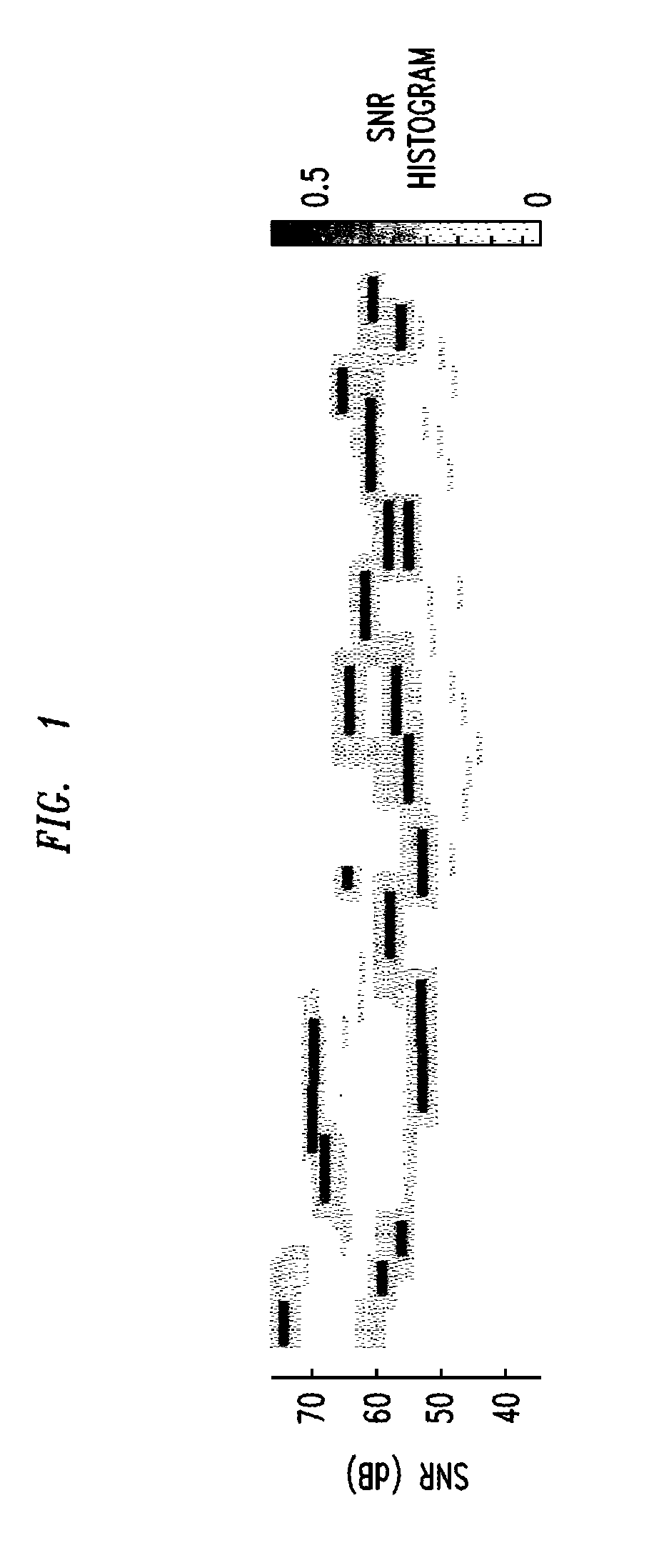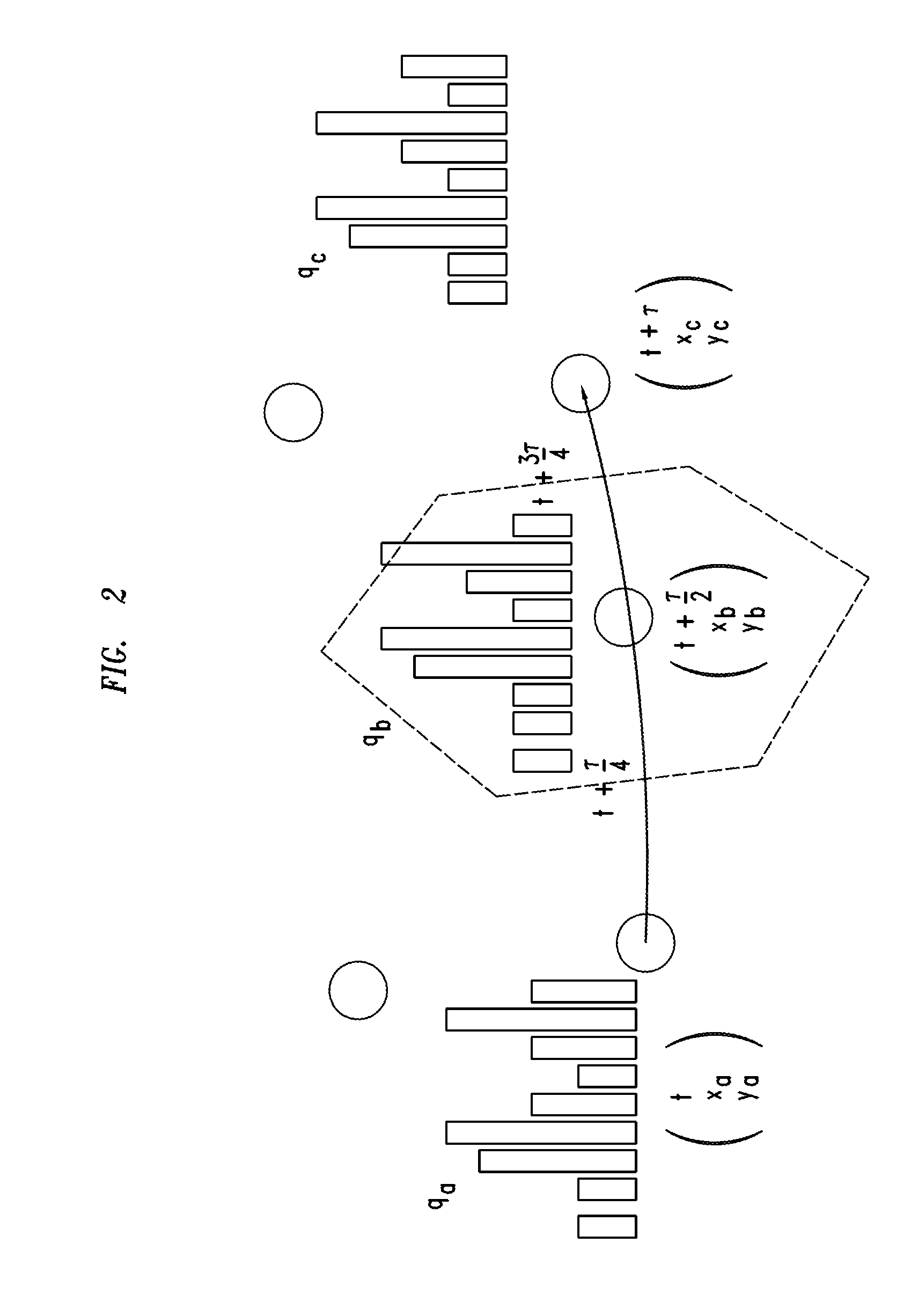KL-Divergence Kernel Regression For Non-Gaussian Fingerprint Based Localization
a kernel and divergence technology, applied in the field of mobile localization, can solve the problems of laborious human involvement, rssi fingerprinting suffers, and certain devices record more complex (e.g., bimodal) distributions
- Summary
- Abstract
- Description
- Claims
- Application Information
AI Technical Summary
Benefits of technology
Problems solved by technology
Method used
Image
Examples
exemplary embodiment 1
2D Office Space with Dense Fingerprinting
[0049]In embodiment 1, a 2D office dataset was used, consisting of a 40 m×40 m area, shown in FIG. 3. The training data consisted of 88 fingerprints recorded for 22 APs; some APs had 130 samples for each location. 4 APs only were used in the experiments. Tracking data in the dataset was acquired a few days later.
Localization Based on RSSI Distributions
[0050]Using leave out-last cross-validation on the training data, an optimal coefficient α in the KL-divergence kernel function (Eq. 3) was selected, as was the optimal number of nearest neighbor fingerprints K for kernel regression, both when using 4 APs and when using 22 APs. The optimal α when using all fingerprints for regression for both numbers of APs was also selected. Tracking data were re-calibrated as discussed above. As shown in Table I, a median accuracy of about 1.06 m was achieved, when using the optimal number of nearest neighbors (K=3) for kernel regression. As was shown in FIG. ...
exemplary embodiment 2
Localization Based on Access Point Visibility
[0054]In a second series of experiments on the same office dataset, as in Embodiment 1, the RSSI from the APs was ignored, and only multinomials of AP connections were used to build the KL-divergence kernels. As shown in Table II and in FIGS. 6A-B, the tracking accuracy remained decent, at about 2 m median error.
[0055]The KL-divergence kernel regression can be extended to accommodate AP connection histograms (i.e. multinomials of the number of connections for each AP during time window τ). Even though the actual RSSI levels can be ignored, as shown, a median accuracy of 2 to 3 m in an office environment can be achieved.
[0056]In these embodiments, the method can forego RSSI recalibration completely, e.g., what APs are seen might be similar across devices, even if the RSSI levels change. It is suggested to remove, from all histograms, the APs that do not show up during tracking. Alternatively, if through software and at training time the AP...
exemplary embodiment 3
Fingerprinting “on the Fly” while Walking
[0057]A less favorable training scenario is when fingerprinting is done “on the fly” while walking. This allows for dense spatial coverage if the RSSI queries can be made sufficiently frequent, if the walk is slow, and if the trajectory covers the space evenly. However, only one sample can be acquired for each location. The lack of repeated measurements means that the RSSI distribution at each location cannot be reliably estimated unless multiple measurements are pooled from neighboring locations. But the spread of the pooled locations introduces more variability in the RSSI values. Localization using only AP visibility can provide a more robust option. A simple method would use the binary vector of AP visibility at each location as fingerprints, whereas during tracking, position would be determined by nearest-neighbor matching to those binary vectors. To apply KL-divergence regression to this data, AP visibility vectors from consecutive loca...
PUM
 Login to View More
Login to View More Abstract
Description
Claims
Application Information
 Login to View More
Login to View More - R&D
- Intellectual Property
- Life Sciences
- Materials
- Tech Scout
- Unparalleled Data Quality
- Higher Quality Content
- 60% Fewer Hallucinations
Browse by: Latest US Patents, China's latest patents, Technical Efficacy Thesaurus, Application Domain, Technology Topic, Popular Technical Reports.
© 2025 PatSnap. All rights reserved.Legal|Privacy policy|Modern Slavery Act Transparency Statement|Sitemap|About US| Contact US: help@patsnap.com



